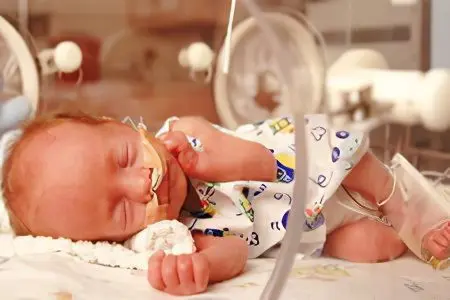Contents
What is pulmonary hemorrhage?
Pulmonary bleeding – this is the release of blood from the pulmonary or bronchial vessels and its seepage through the airways. This condition is caused by various diseases of the respiratory organs and requires emergency medical care, as it is very dangerous.
It is worth distinguishing between such concepts as pulmonary hemorrhage and hemoptysis. With hemoptysis, the amount of blood is insignificant and it is released with a cough, it is present in the sputum in the form of streaks. When bleeding, a significant amount is released. It can run continuously or intermittently. Some of it can either be aspirated or swallowed by humans.
Signs of pulmonary hemorrhage

In order to determine the presence of pulmonary bleeding, one should focus on such signs as:
It almost always begins with hemoptysis.
During coughing, clots have a scarlet or rich dark scarlet color.
Blood may be additionally excreted through the nose. In this case, it looks like foam, there are no clots in it.
A person experiences a paroxysmal cough, by nature it is most often dry at the beginning, later bloody discharge will join it.
A tickling sensation is felt in the throat, with abundant secretions, a characteristic gurgling can be heard.
On the affected side, a person feels a burning sensation or heat.
The face becomes pale.
Blood pressure drops.
The person is covered with a cold and sticky sweat.
The heartbeat quickens, tachycardia is often observed.
With profuse blood loss, dizziness is observed, tinnitus, convulsions, vomiting and shortness of breath may be present.
Also, with the loss of a large volume of blood, amaurosis is observed. It is expressed in the loss of vision.
Sometimes asphyxia can occur.
If bleeding continues for more than 2 days, a person may develop aspiration pneumonia.
Emergency care algorithm for pulmonary hemorrhage
Pulmonary bleeding that has arisen in a person requires emergency care, as it threatens life. Therefore, if a similar condition is observed in a nearby person, then, first of all, it is necessary to call an ambulance.
Prior to her arrival, you need to be guided by the following algorithm of actions:
A person should be seated in such a way that his body is slightly tilted forward, and his head is not thrown back. This will avoid asphyxia and prevent him from choking on blood.
If it is not possible to seat the patient, then he is laid out on the side on which the lung is damaged. This is important to do in order to squeeze it in the chest, thereby reducing blood loss. In addition, this method of laying out will not allow blood to flow into a healthy lung. It is important that the head is always turned to the side.
Place a heating pad or ice pack on your chest. If one is not available, then you can replace it with any other similar item, for example, a bottle of cold water. This event will spasm small vessels and somewhat reduce blood loss. Apply cold for 15 minutes, with a break of 2 minutes.
The patient needs to be calmed, do not let him talk. In this state, a person needs absolute physical rest.
Do not drink a person with pulmonary hemorrhage.
As for medicines, they can be used only after consulting a doctor. However, it is not always possible to get it, therefore, in extreme cases, you can independently use a drug such as Vikasol. It is administered intramuscularly and helps stop bleeding. For the same purpose, Dicyon is used, but this remedy requires dilution with saline and intravenous administration. With convulsions, Seduxen or Diazepam is introduced, and to relieve pain, Promedol or Fentanyl.
Pulmonary hemorrhage in newborns

Pulmonary bleeding in newborns is not uncommon. It occurs in 1 child out of a thousand and may be associated with such causes as: severe labor with asphyxia of the newborn, premature pregnancy, hypothermia, congenital heart disease, coagulation disorders, hemorrhagic pulmonary edema. However, modern resuscitation of newborns is different in that in most cases the child manages to help and bring him out of a dangerous state.
Recently, pulmonary hemorrhages are becoming less common and due to more careful monitoring of newborns. Indeed, most often such a condition is preceded by respiratory depression, hypoglycemia, scleredema.
In order to prevent pulmonary bleeding, doctors take a number of actions, which include the following measures:
Collapse resuscitation, with replenishment of plasma proteins.
Removal of pulmonary edema with Fruzemide and, in some cases, Morphine.
Prevention and correction of possible blood clotting.
If necessary, artificial ventilation of the lungs at high frequencies.
Replacement therapy with surfactan, which helps the child to normalize breathing function.
Severely premature babies deserve special attention. They have an increased risk of pulmonary hemorrhage. It is caused by such factors as: pulmonary edema, suffocation with a pronounced lack of oxygen, intrauterine or acquired infection, blood clotting disorders, open ductus arteriosus.
Most often, pulmonary hemorrhage in premature newborns opens on the 3rd day of life. The severity is different, it varies from minor blood impurities in the secreted mucus that collects in the trachea, to massive blood loss. The more intense the bleeding, the faster the general condition of the child and the functionality of his lungs deteriorate.
Pulmonary hemorrhage is a life-threatening condition. It is dangerous for both newborns and adults, therefore, it requires competent first aid and urgent hospitalization.









